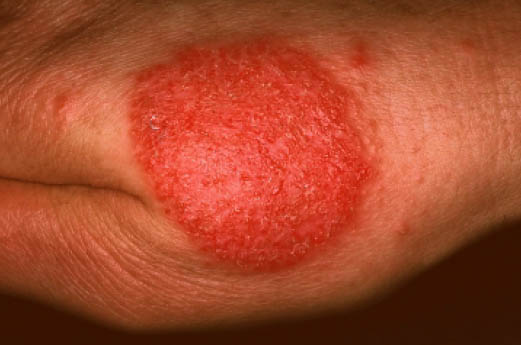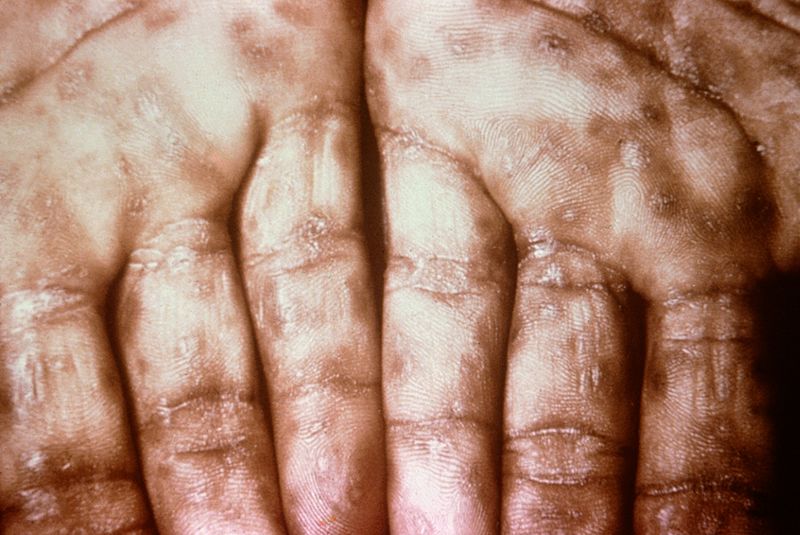Nummular Dermatitis, often abbreviated as ND, is a chronic skin condition that affects individuals of all ages but is more commonly observed in adults. It is characterized by coin-shaped or oval lesions on the skin, which can be itchy, inflamed, and sometimes oozing. The term “nummular” originates from the Latin word for “coin,” reflecting the distinct shape of the affected areas. This article will delve into the causes, symptoms, and treatments available for this persistent skin condition.

Understanding Nummular Dermatitis
Nummular Dermatitis is a type of eczema that manifests as distinctive round or oval patches on the skin. These patches are typically red, scaly, and may ooze fluid in severe cases. The condition tends to flare up during colder months when the air is dry, making the skin more susceptible to irritation. Although it can occur at any age, it is most frequently diagnosed in men in their fifties and sixties, while women tend to develop it earlier, usually in their teens or twenties.
Causes of Nummular Dermatitis
The exact cause of this skin condition remains unknown, but several factors have been identified as potential triggers:
- Dry Skin: Individuals with naturally dry skin are more prone to developing this condition. Dryness compromises the skin’s barrier function, making it easier for irritants to penetrate and trigger inflammation.
- Allergic Reactions: Exposure to allergens such as soaps, detergents, or certain fabrics can lead to an allergic reaction, exacerbating the symptoms of nummular dermatitis.
- Environmental Factors: Cold weather and low humidity levels can strip moisture from the skin, increasing the likelihood of developing this condition.
- Stress: Emotional stress has been linked to flare-ups of various skin conditions, including nummular dermatitis.
- Infections: Bacterial infections, particularly those caused by Staphylococcus aureus, can worsen existing lesions or contribute to new outbreaks.
Symptoms of Nummular Dermatitis
Recognizing the symptoms of nummular dermatitis is crucial for timely diagnosis and treatment. The most common signs include:
- Coin-Shaped Lesions: The hallmark symptom of this condition is the appearance of round or oval patches on the skin. These lesions are often found on the arms, legs, hands, and torso.
- Itching: The affected areas are typically very itchy, which can lead to scratching and further irritation.
- Redness and Inflammation: The skin around the lesions becomes red and inflamed, making it visibly noticeable.
- Oozing and Crusting: In severe cases, the lesions may ooze fluid and form crusts, indicating an infection or worsening of the condition.
- Dry and Scaly Skin: The skin surrounding the lesions is often dry and flaky, contributing to discomfort and irritation.
Treatment Options for Nummular Dermatitis
While there is no permanent cure for nummular dermatitis, several treatment options can help manage the symptoms and reduce flare-ups. These treatments focus on alleviating discomfort, preventing infection, and restoring the skin’s natural barrier. Below are some of the most effective approaches:
Topical Treatments
Topical treatments are often the first line of defense against nummular dermatitis. These include:
- Mild Corticosteroids: Over-the-counter hydrocortisone creams can help reduce inflammation and itching. For more severe cases, prescription-strength corticosteroids may be necessary.
- Moisturizers: Regular application of emollients and moisturizers helps lock in moisture and prevent dryness. Ointments and creams containing ceramides are particularly effective in repairing the skin barrier.
- Antibiotic Creams: If the lesions become infected, topical antibiotics may be prescribed to combat bacterial growth and promote healing.
Oral Medications
In cases where topical treatments are insufficient, oral medications may be recommended:
- Antihistamines: These medications can help alleviate itching and improve sleep quality by reducing nighttime scratching.
- Oral Antibiotics: For widespread infections, oral antibiotics may be prescribed to address bacterial overgrowth.
- Systemic Corticosteroids: In severe cases, short-term use of oral corticosteroids may be necessary to control inflammation.
Lifestyle Modifications
Beyond medical treatments, lifestyle changes play a significant role in managing nummular dermatitis:
- Avoiding Irritants: Identifying and avoiding potential irritants such as harsh soaps, detergents, and fragrances can prevent flare-ups.
- Humidifiers: Using a humidifier at home, especially during winter months, can maintain optimal humidity levels and prevent skin dryness.
- Gentle Skincare Routine: Adopting a gentle skincare routine that includes lukewarm baths and mild cleansers can minimize irritation.
- Stress Management: Practicing relaxation techniques such as yoga, meditation, or deep breathing exercises can help reduce stress-related flare-ups.
Phototherapy
For individuals with persistent or severe symptoms, phototherapy may be an option. This treatment involves exposing the skin to controlled amounts of ultraviolet light under medical supervision. Phototherapy can help reduce inflammation and improve the overall appearance of the skin.
Dietary Considerations
Although there is limited scientific evidence linking diet to nummular dermatitis, some individuals report improvements after making dietary adjustments. Incorporating anti-inflammatory foods such as omega-3 fatty acids, antioxidants, and probiotics may support skin health. Consulting a healthcare provider or nutritionist can help tailor dietary recommendations to individual needs.
Alternative Therapies
Some people explore alternative therapies to complement conventional treatments:
- Herbal Remedies: Certain herbs like chamomile and calendula have anti-inflammatory properties that may soothe irritated skin.
- Aromatherapy: Essential oils such as lavender and tea tree oil are believed to have calming effects and may help reduce itching.
- Acupuncture: This traditional Chinese medicine technique is thought to balance the body’s energy and potentially alleviate symptoms.
Preventive Measures
Preventing nummular dermatitis involves maintaining healthy skin and avoiding known triggers:
- Regular Moisturizing: Keeping the skin hydrated is key to preventing dryness and irritation.
- Wearing Soft Fabrics: Opt for loose-fitting clothing made from soft, breathable materials like cotton to minimize friction.
- Limiting Hot Showers: Hot water can strip the skin of its natural oils, so it is advisable to take shorter, lukewarm showers.
- Using Gentle Cleansers: Choose fragrance-free, hypoallergenic products to avoid irritating the skin.
By understanding the causes, recognizing the symptoms, and exploring the available treatments, individuals with nummular dermatitis can better manage their condition and improve their quality of life.





